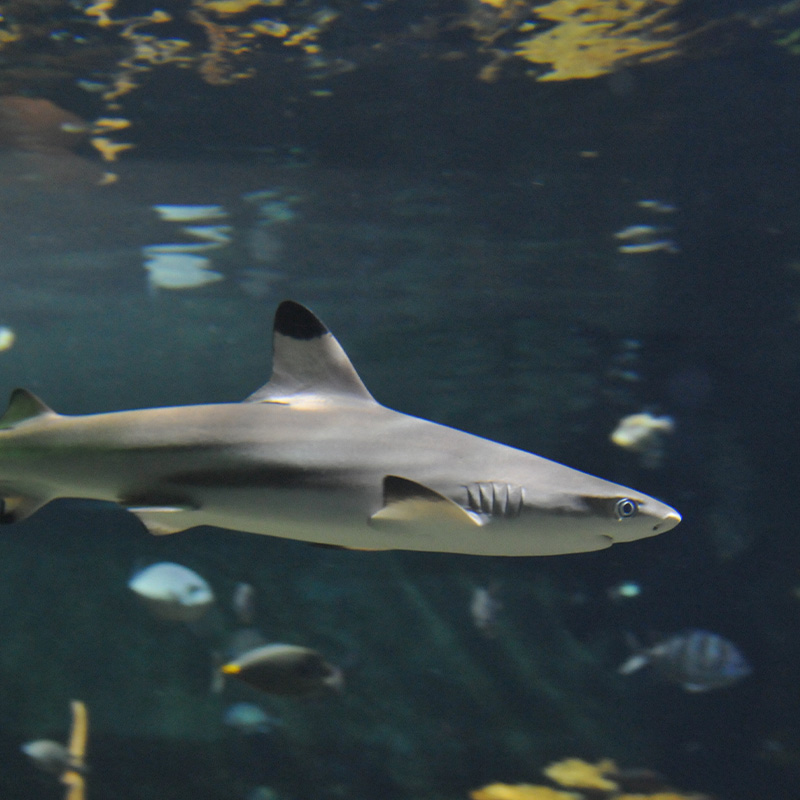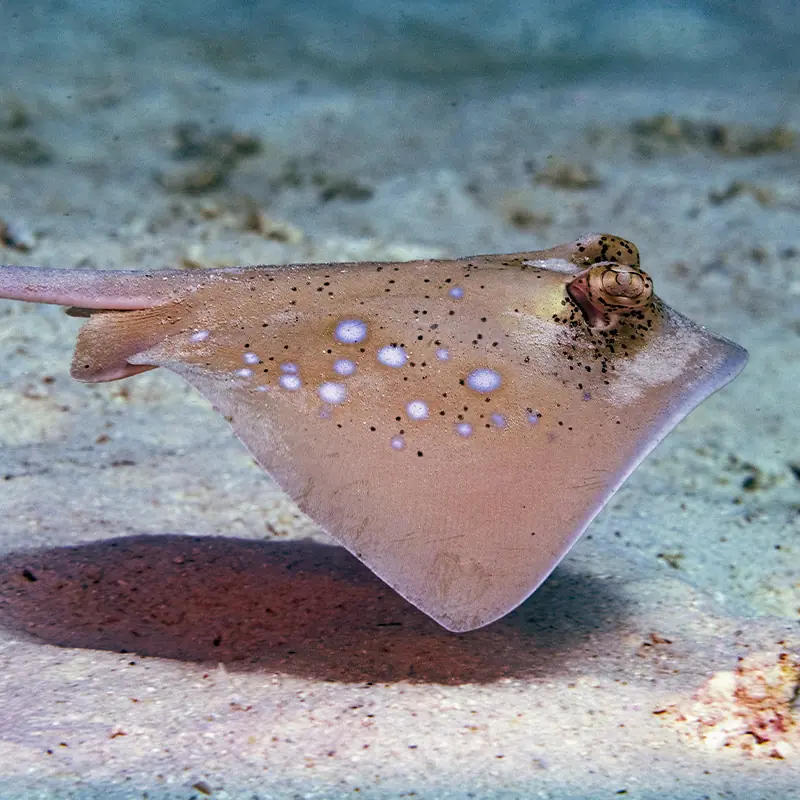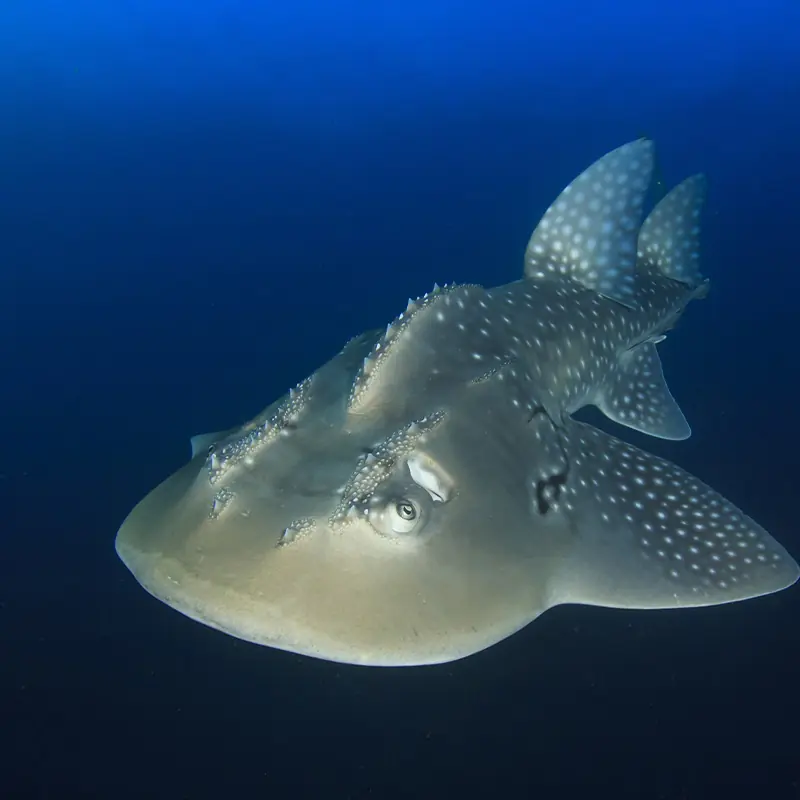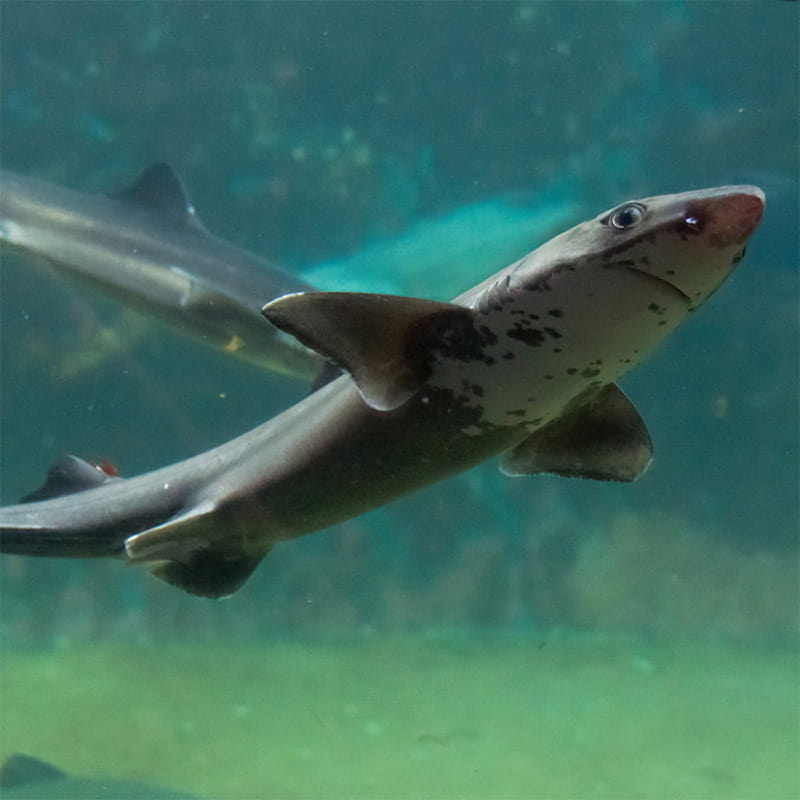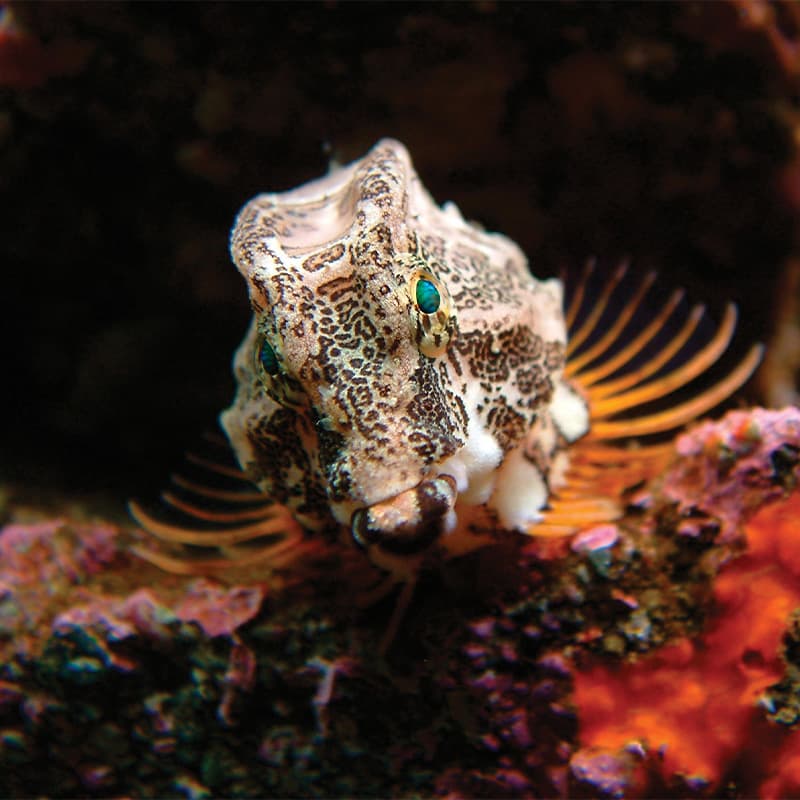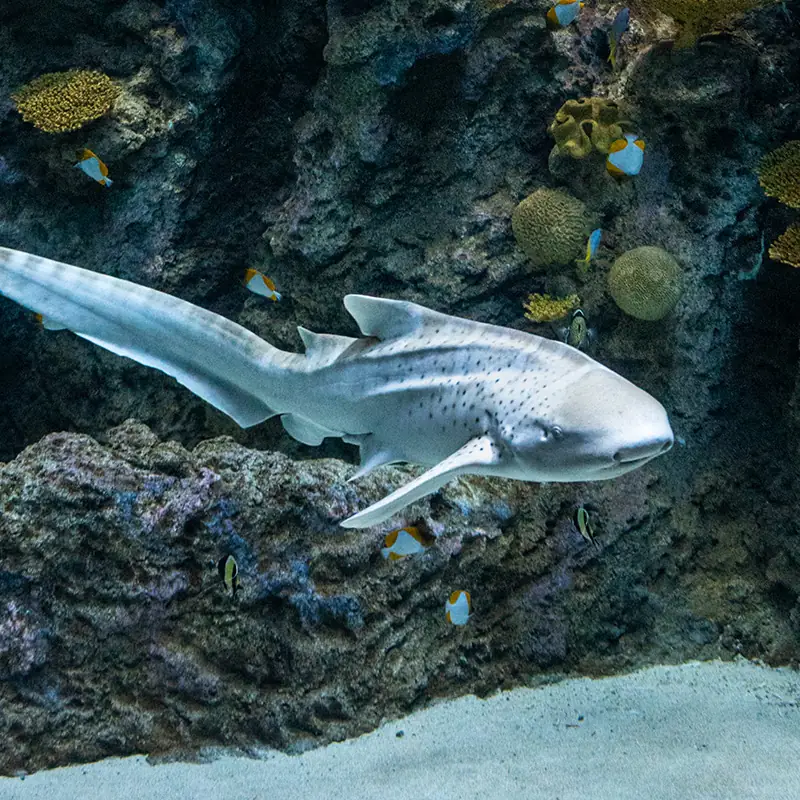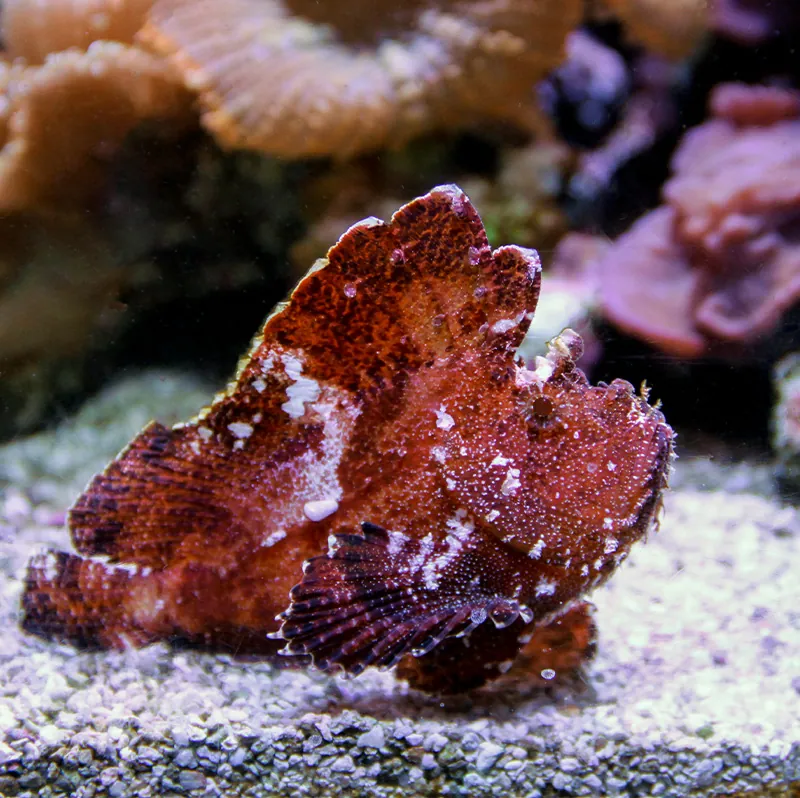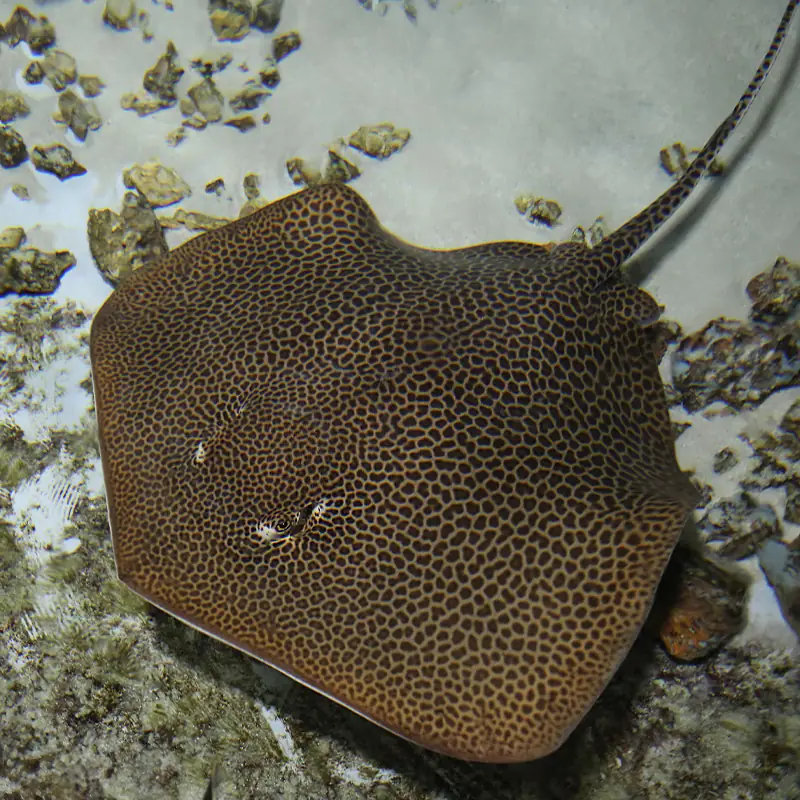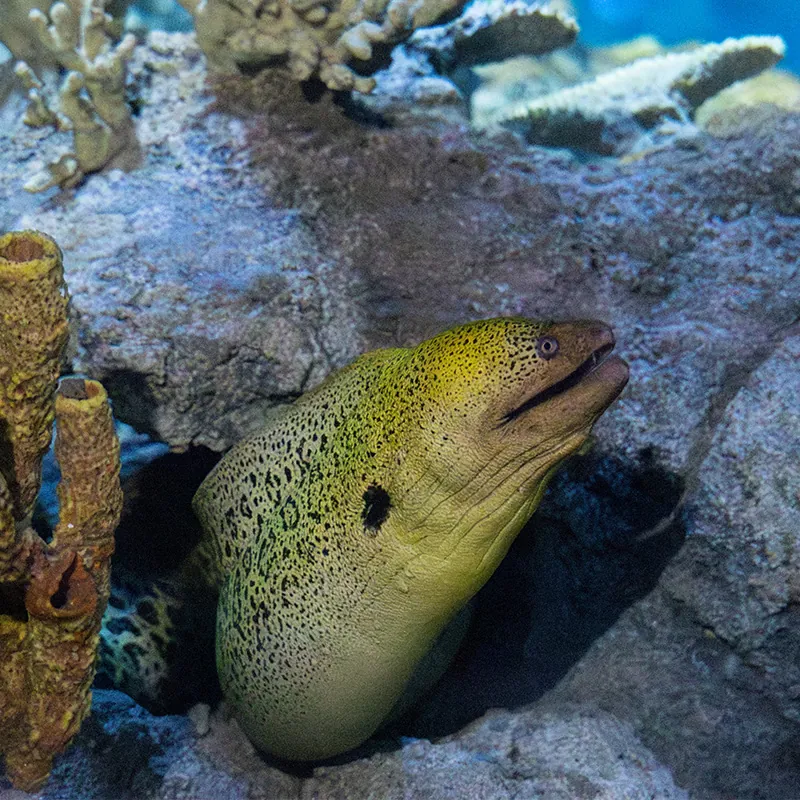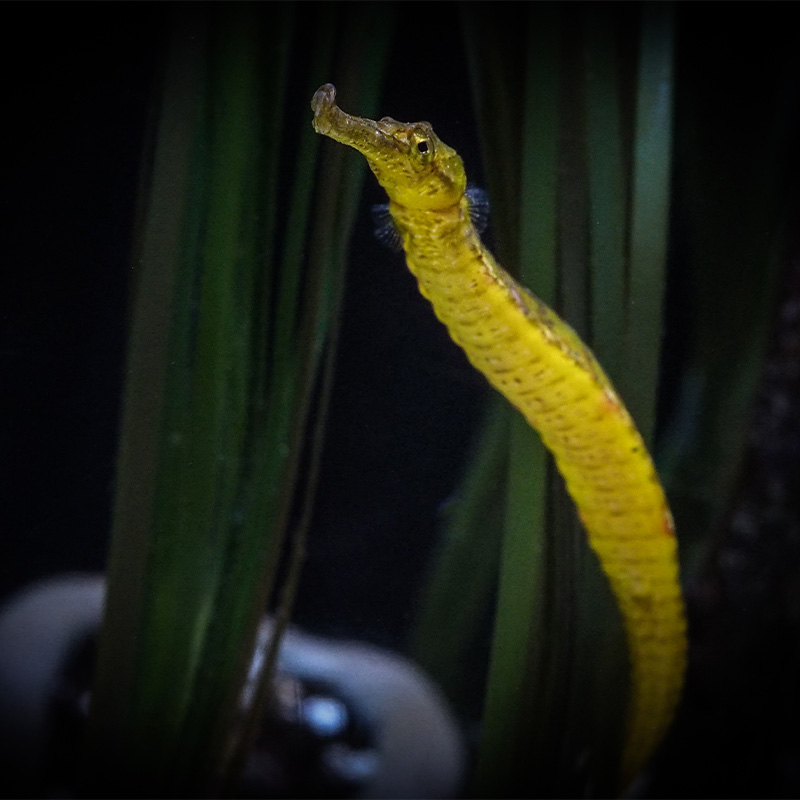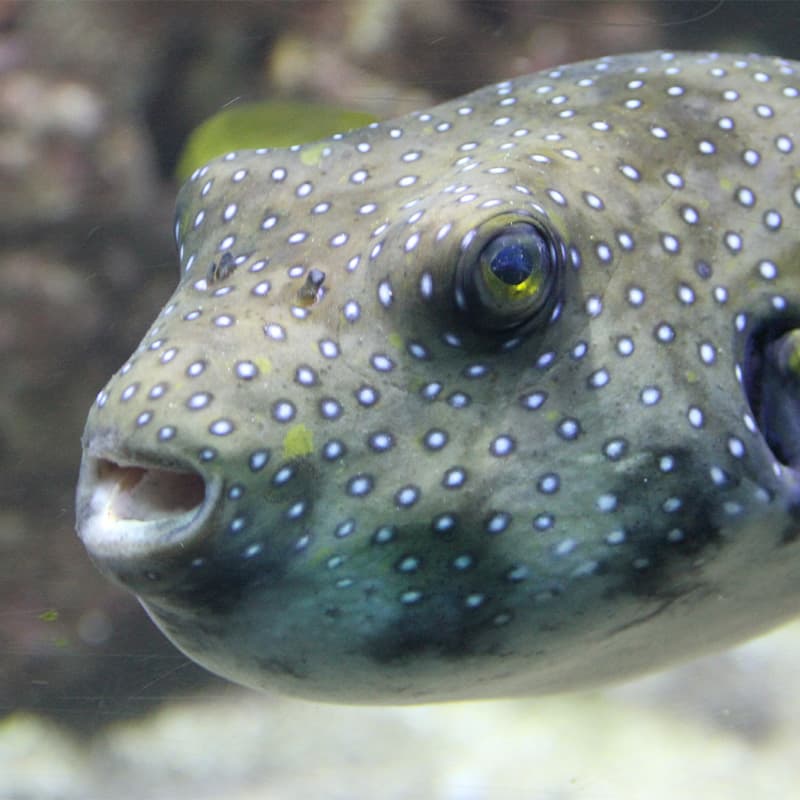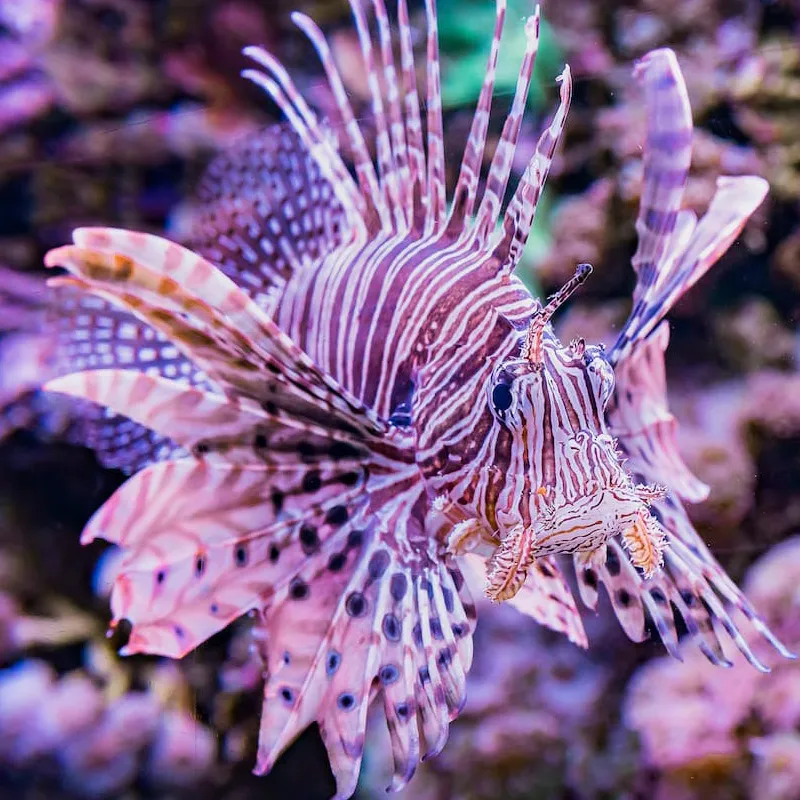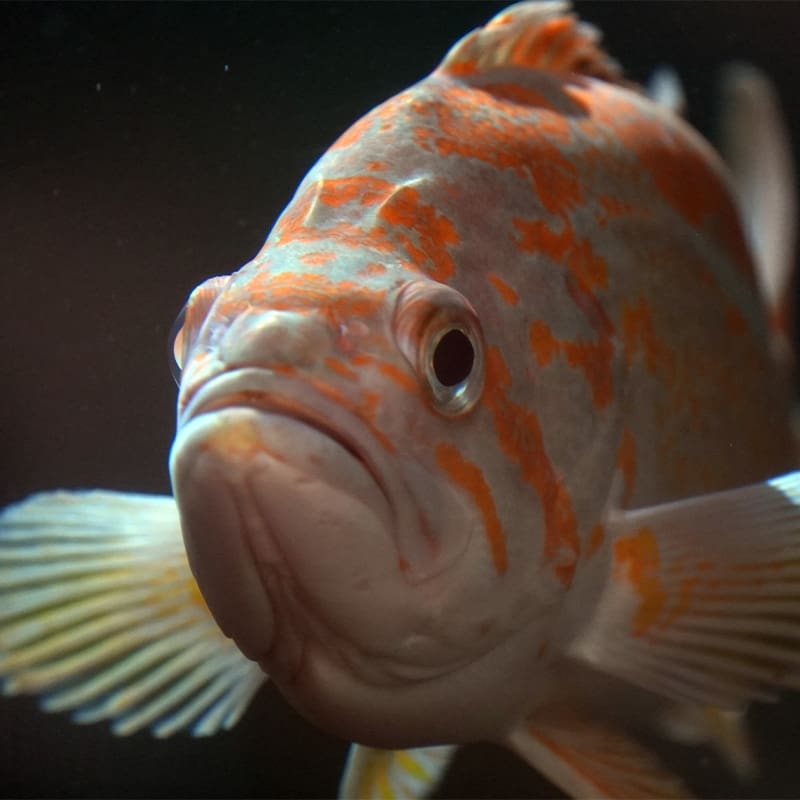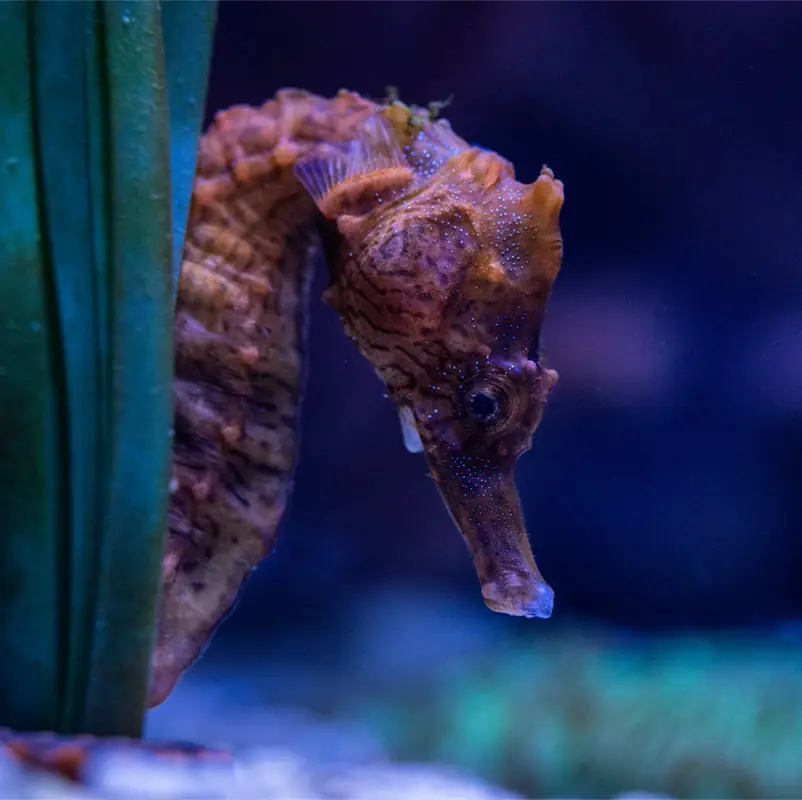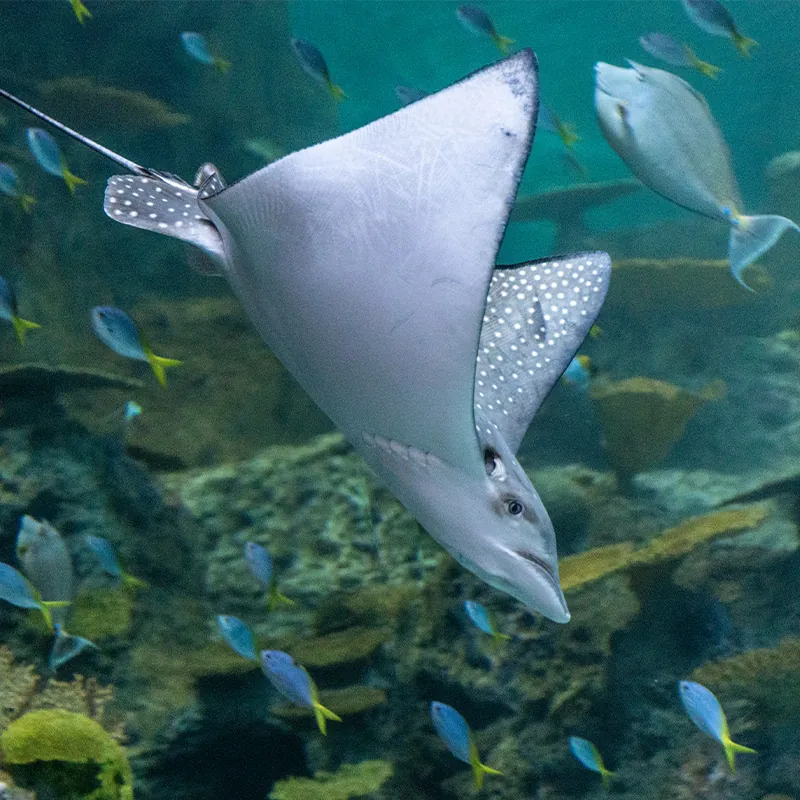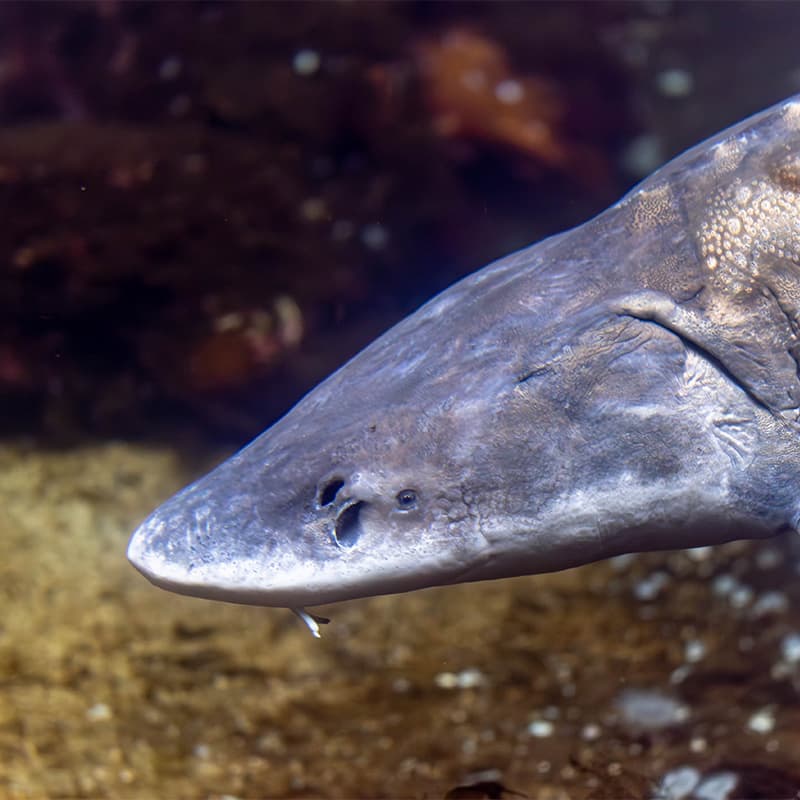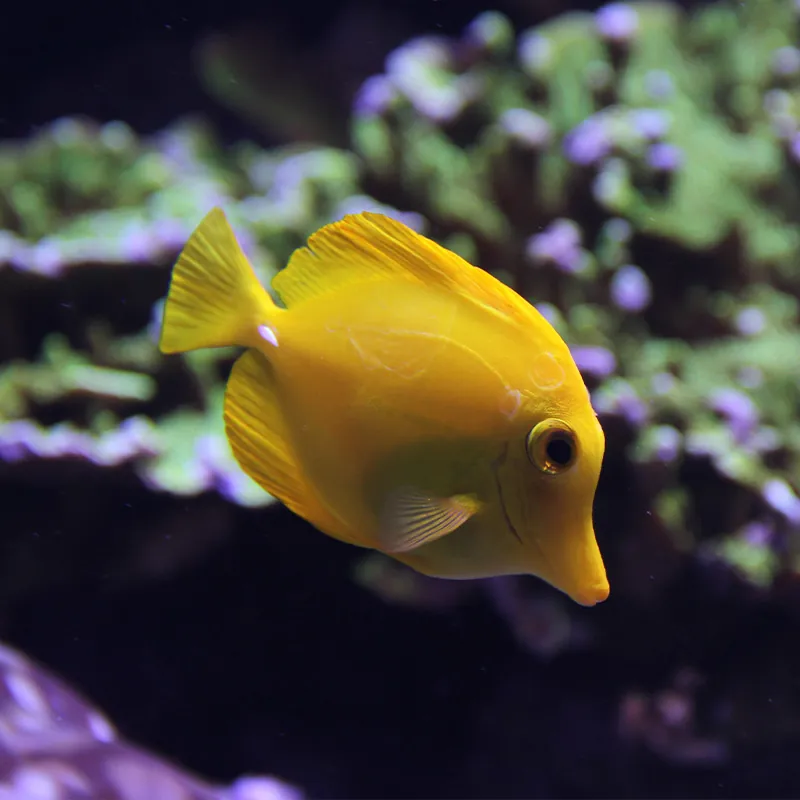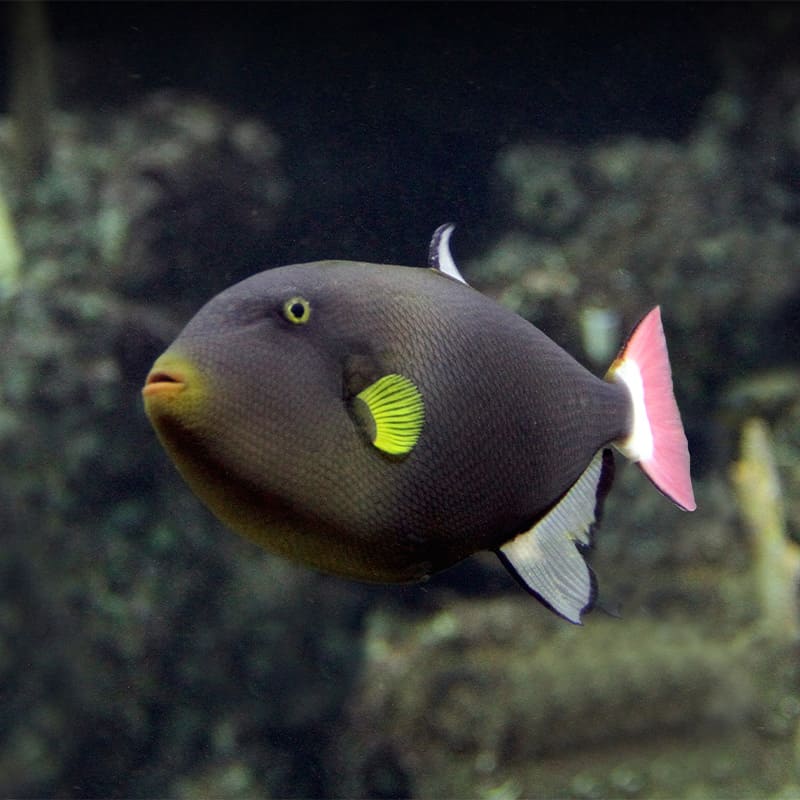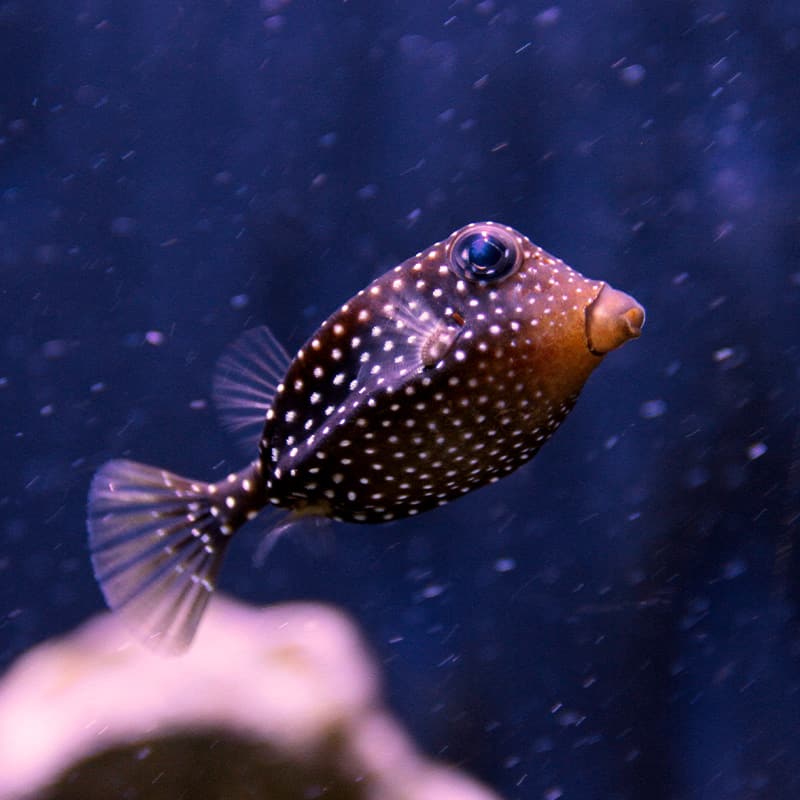- Fish
Wolf eel
The eel that’s not an eel
Wolf eels aren’t eels at all—they’re fish, and not the same as true eels. One key distinction is that wolf eels have pectoral fins behind their heads, which is characteristic of fish, not marine eels like morays. Put simply, they’re a just a long, skinny fish!
At the Aquarium
- Window on Washington Waters, Pier 59
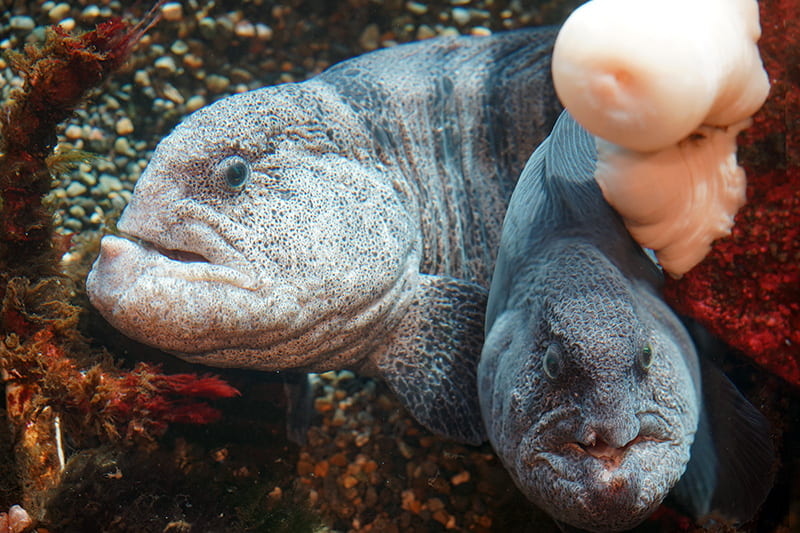
Not claustrophobic!
Adult wolf eels prefer enclosed spaces. They make their homes in dens—caves or crevices on rocky reefs or pilings (sometimes competing with octopuses for a desirable living space!). They back their long bodies into these spaces, and then stick their heads out to watch for prey. Juvenile wolf eels, on the other hand, spend their early lives in the open water. Once they mature and find a mate, they select a den and typically spend the rest of their lives living in it.
…And they lived happily ever after
Wolf eels may mate for life, and both male and female care for eggs as they develop. The female lays her eggs in the den (up to 10,000 of them!), then both parents guard them for the 13–16 weeks it takes for them to mature and hatch, even wrapping their bodies around the egg mass to keep it safe from predators. During this period, only one parent at a time goes out to feed.
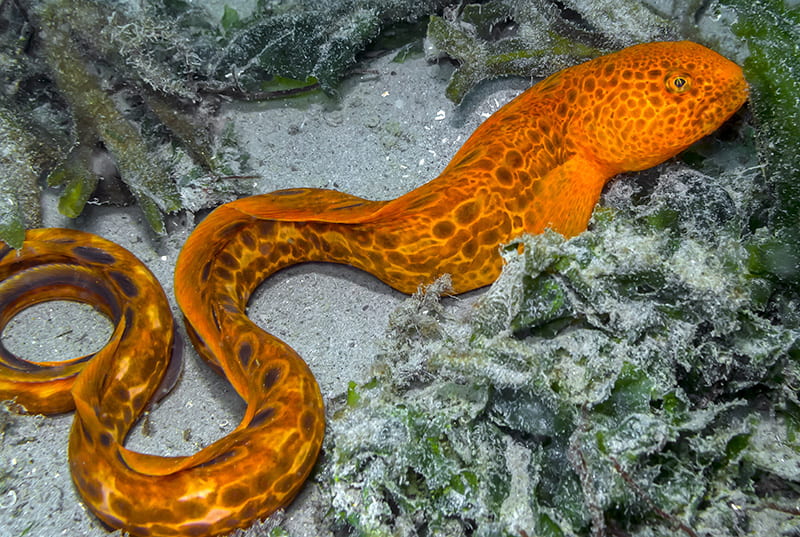
Colorful beginnings
Juvenile wolf eels are quite noticeable in the water, with their vibrant, brick-color and bright orange and purple highlights. As the wolf eels get older, however, those bright colors fade and become shades of gray and brown. Adults have a pattern of dark spots on their heads and bodies that is unique to each individual. At the Seattle Aquarium, biologists can identify different wolf eels by their spots.
Hungry, hungry wolf eels
While wolf eels may change their appearance quite drastically as they mature, one thing remains the same: their appetites! Wolf eels are voracious eaters at all ages. In the wild, they prey on crabs, sand dollars, sea urchins, snails, abalone, mussels, clams and fish. Wolf eels use their strong jaws like nutcrackers to crush through hard foods.
An interesting outer layer
Wolf eels have a thick coating of slime on their skin that helps protect them, which works like an immune system. Their scales are unlike those of most other fish: they’re very small and imbedded in their skin, which gives wolf eels their distinctive leathery appearance. They also appear to get itchy sometimes and can be seen swimming upside down, rubbing their backs on rocks to scratch!
How to help wolf eels
Although wolf eel populations appear to be stable, they do face threats—many of them human-caused, such as pollution or being accidentally caught in fishing gear. You can help protect wolf eels by doing your part to take care of Puget Sound and the world’s one big ocean.
Quick facts
Wolf eels are not actually eels—they are just a long, skinny fish.
As these fish age, their bright colors fade to shades of gray and brown.
They’re shy! Wolf eels spend most of their time in dens, crevices and caves in the reefs.
